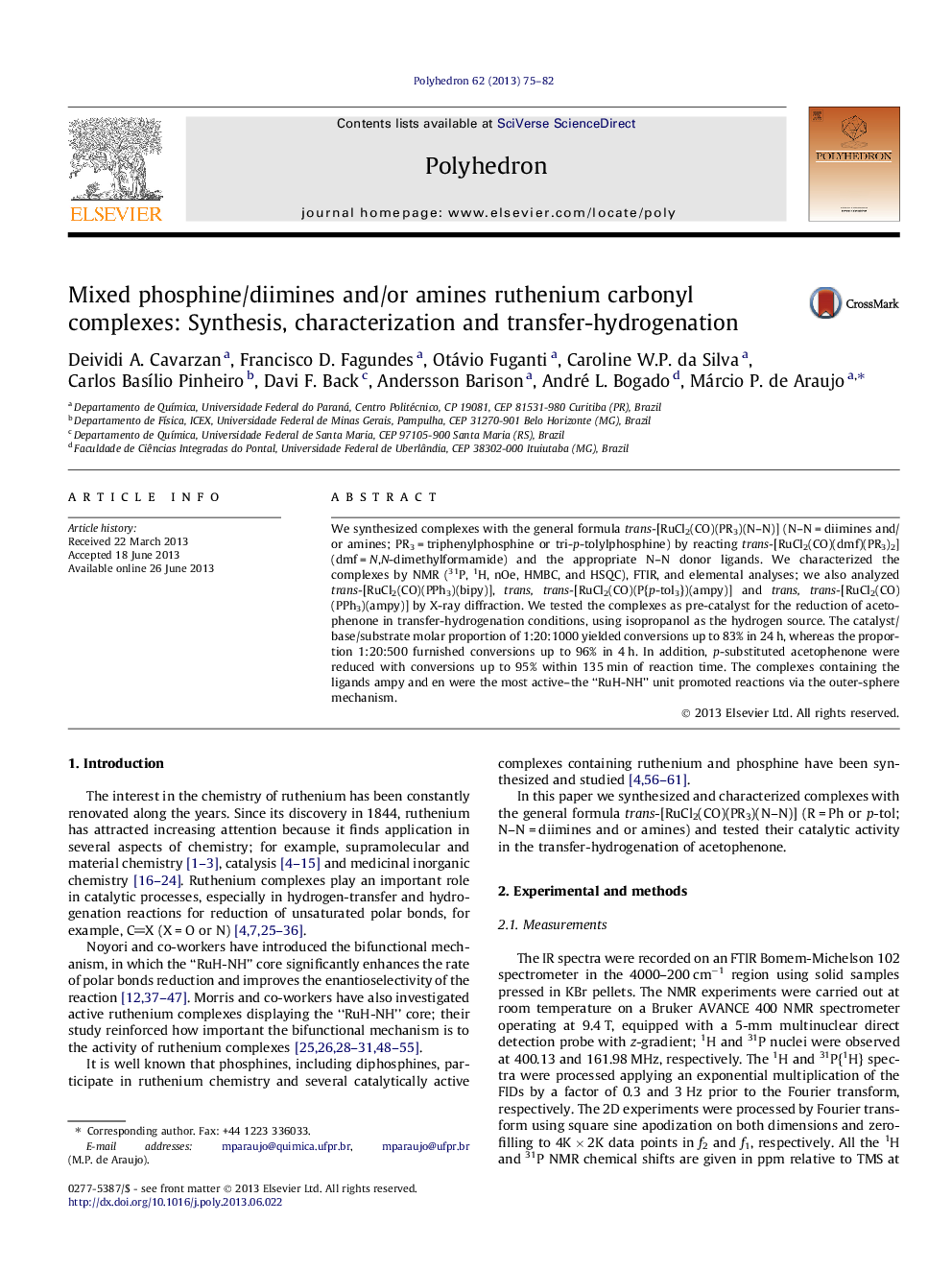| Article ID | Journal | Published Year | Pages | File Type |
|---|---|---|---|---|
| 1337192 | Polyhedron | 2013 | 8 Pages |
We synthesized complexes with the general formula trans-[RuCl2(CO)(PR3)(N–N)] (N–N = diimines and/or amines; PR3 = triphenylphosphine or tri-p-tolylphosphine) by reacting trans-[RuCl2(CO)(dmf)(PR3)2] (dmf = N,N-dimethylformamide) and the appropriate N–N donor ligands. We characterized the complexes by NMR (31P, 1H, nOe, HMBC, and HSQC), FTIR, and elemental analyses; we also analyzed trans-[RuCl2(CO)(PPh3)(bipy)], trans, trans-[RuCl2(CO)(P{p-tol3})(ampy)] and trans, trans-[RuCl2(CO)(PPh3)(ampy)] by X-ray diffraction. We tested the complexes as pre-catalyst for the reduction of acetophenone in transfer-hydrogenation conditions, using isopropanol as the hydrogen source. The catalyst/base/substrate molar proportion of 1:20:1000 yielded conversions up to 83% in 24 h, whereas the proportion 1:20:500 furnished conversions up to 96% in 4 h. In addition, p-substituted acetophenone were reduced with conversions up to 95% within 135 min of reaction time. The complexes containing the ligands ampy and en were the most active–the “RuH-NH” unit promoted reactions via the outer-sphere mechanism.
Graphical abstractComplexes with the general formula trans-[RuCl2(CO)(PR3)(N–N)] (N–N = diimines and/or amines; PR3 = triphenylphosphine or tri-p-tolylphosphine) were synthesized by reacting trans-[RuCl2(CO)(dmf)(PR3)2] (dmf = N,N-dimethylformamide) and the appropriate N–N donor ligands and the complexes were tested as pre-catalyst for the reduction of acetophenone in transfer-hydrogenation conditions, using isopropanol as the hydrogen source. The catalyst/base/substrate molar proportion of 1:20:1000 yielded conversions up to 83% in 24 h, whereas the proportion 1:20:500 furnished conversions up to 96% in 4 h. The complexes containing the ligands ampy and en were the most active – the “RuH-NH” unit promoted reactions via the outer-sphere mechanism.Figure optionsDownload full-size imageDownload as PowerPoint slide
